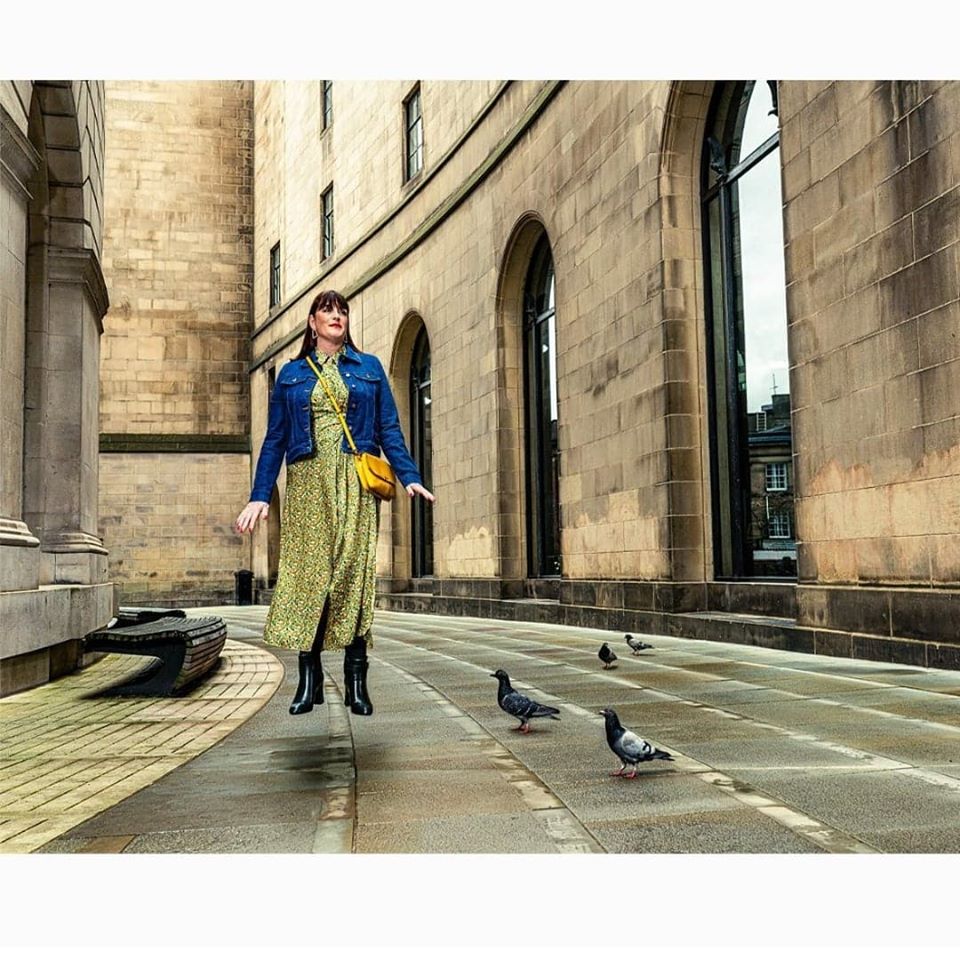I love a financial experiment and have a ‘slight’ obsession with tracking everything money wise with spreadsheets. From spending diaries to cash flow forecasts and my net worth, I have it all stored in my trusty spreadsheets.
In July of 2020 I started an experiment in collaboration with PensionBee that I will continue to track for many years. I wanted to demonstrate the power of investing money in stocks and shares & my pension compared to cash savings. Many people, and a lot of women, still fear investing. I am keen to demonstrate the results of saving my own cash, sharing the returns every year. Putting my money where my mouth is.
I have saved £4000, £1000 in four different ways. The annual anniversary is 7th July (starting in 2020) and I record the growth or losses every year to see how that £1000 changes over time. Cue analysis that makes my mathematical heart sing.
I have £1000 saved in four different savings places, from immediate access cash all the way through to my pension.
- Marcus Bank Instant Access Saving Account
- Fixed term cash savings account from Zopa Bank.
- Life Strategy 80% equity fund, Stock and Shares ISA with Vanguard
- PensionBee pension, Tracker fund until Dec 2020, then Fossil Fuel Free fund Jan 2021 onwards.
How have these four different methods of savings performed over time and where is the best place for my money?
Immediate Access Cash Savings
My first £1000 is held in a Marcus Bank instant access savings account. This is a decent place to keep emergency cash savings. It is available instantly and is held in a separate bank to my personal banking, hence slightly harder to access.
This is the place where I keep my emergency money of three (to six) months of essential expenses, and where I store my company tax bill money.
At the time of first opening, early 2020, it was the highest interest paying account. It’s no longer the best rate anymore, the battle for the highest interest rate instant access account changes all the time. The account paid a market leading rate in July 2020 of 1.05%, but reduced over time down to a low of 0.4% in March 2021, but is now back up to 1.3%. Following what the base rate is doing (1.25% at 16th June 2022).
My £1000 Marcus balance over two years has earned £14.96 interest,
an average rate of 1.5% over two years or 0.75% per year.
Saving in cash is never going to give you much of a return with current low interest rates. But it is the right place to put emergency cash and short-term savings. In actual terms the money grows over time with the small amount of interest, it will never result in a loss. However, we must be aware of inflationary impact. Inflation at July 2022 is 9.1%, meaning that on average everything we buy is 9.1% more expensive compared to a year ago.
Fixed Term Savings Account
My second savings choice for next £1000 was to open a fixed term savings account with Zopa Bank. I have worked closely with Zopa bank on various campaigns and products launches over the past four years, so it was natural step for me to save into their new market leading product in July 2020.
This is a fixed term account meaning that I cannot access my cash for a two-year period, in return I receive a more favourable rate of interest than an instant access cash account. The rate was 1.4%, a fixed rate for the entire two years.
My £1000 Zopa fixed term savings, over the past two years has earned £27.57 interest,
an average rate of 2.8% over two years and 1.4% per year.
Again, not a great amount of interest earnings after two years, although if I had locked away £10k, that would be a £275 return. Fixed Term Savings accounts are a good option if you know you won’t need the money for a one-year, two-year or even five-year period. It is risk free with your return being guaranteed.
Stocks & Shares ISA
My third choice of saving £1000 or investing, is in a Stocks & Shares (S&S) ISA with Vanguard (other investment providers are available, this is the one I choose to invest with due to lower fees). A S&S ISA is an investment product, not cash, meaning that it comes with risk. Within my S&S ISA I invest in a fund (a balanced mixture of 80% company shares and 20% bonds). The value of my investment increases if my funds go up in value or I make a loss if my investment fund reduces in value.
Investing is a medium-term savings product, where you should leave the money for at least five years, the longer the better. This way you would hope to ride the ups and downs of the stock market. Be aware that your investment can go down as well as up.
The money is accessible within a few days if you need it, to access your cash you will need to sell your investment. It is not suitable for emergency money, as you might need that money when markets are down, and you may have lost money on your original investment.
I put my £1000 savings in July 2020 into an 80% Equity Life Strategy Fund.
My £1000 Vanguard S&S ISA has grown by £143 in two years.
The valuation being £1,143, a total growth of 14.3% or 7.2% per year.
The performance here has been interesting. After one year my ISA had grown to £1,193, a very impressive growth in one year of 19.3%. The stock markets did perform very strongly between July 2020 and July 2021 in lockdown. But I knew this was too good to be true, it’s a one off very unusual annual gain. In the second year of performance my fund has lost £50 and 4% in value and has reduced back to £1,143.
Overall, for the two years this means a growth of 14.3%, or 7.2% per year. This is STILL an incredible growth over the two-year period compared to the cash savings. I am happy with this growth and based on my timings and growth it’s the right decision to invest as much as I am comfortable with.
PensionBee Pension
My fourth choice of savings was to put £1000 into my pension with PensionBee. My private pension is a very important long-term savings pot, particularly as I am self-employed and don’t have employment pension contributions to rely on. I am unable to access this money until the age of 57 (this age increases from 55 to 57 from 2028, but the age might change again depending on government rule changes).
My pension savings will provide my future income when I no longer earn a paid salary.
Pension savings, like the S&S ISA are invested into a fund of my choice within the PensionBee fund options. Initially my pension was invested in a standard low fee tracker fund, but I moved this over to the Fossil Fuel Free fund when it was launched January 2021 for personal ethical reasons.
My £1000 saved into my PensionBee Pension has grown by £237 in two years.
The valuation at July 2021 being £1,237, a two-year growth of 19% or 10% per year.
I must admit I was expecting my pension to have also reduced in value in its second year, just like my S&S ISA, but no, it has grown by a tiny bit. The year two growth was £7 or 0.5%. The first year of growth was a one-off unexpected large growth and this has now averaged out to a 10% growth per year over the two-year period.
I am very happy with my personal finance decision of prioritising my savings into my pension. I am putting as much of my spare cash as possible into my pension to make up for when I was in my twenties when I opted out (shock horror) of my lucrative employed pension.
Add to this growth the tax benefits of pension contributions. I contribute via my limited company, an allowable expense saving me 19% corporation tax. As a self-employed or employed person you get tax relief at source, if you add £80 into your pension, HMRC will usually add in another £20 in tax relief, all done via PensionBee.
Summary of Results
| £1000 saved 4 Different Ways | Valuation | Valuation | 1 Year | Valuation | 2 Year | ||||
| 07/07/2020 | 07/07/2021 | Growth | % Growth | 07/07/2022 | Growth | % Growth | |||
| Marcus Instant Access Savings | 1000 | 1006 | 6 | 0.6% | 1015 | 15 | 1.5% | ||
| Zopa Two Year Fixed Term Savings | 1000 | 1013 | 13 | 1.3% | 1028 | 28 | 2.8% | ||
| Vanguard Life Strategy S&S ISA | 1000 | 1193 | 193 | 19.3% | 1143 | 143 | 14.3% | ||
| PensionBee Fossil Fuel Free Pension | 1000 | 1231 | 231 | 23.1% | 1237 | 237 | 23.7% |
These numbers for my savings decisions prove that investing my money is a MUCH better way of getting a better return on my money, even MORE so in times of high inflation.
I am happy that my pension and investment is performing so well and will continue to prioritise my pensions savings (of at least £1-2000 per month) and my S&S ISA savings (of £2 – 500 per month). My emergency fund remains in cash, but that stays at just the three months of essential expenses, which suits my personal attitude to risk.
Please be aware that any form of investment can go up and down. You may want to consider advice from a qualified IFA. Just make sure they come recommended by a trusted friend and check their investment levels. Some will only work with clients with an investment level of at least £150k. This post was written in collaboration with PensionBee. Capital at risk.









One Response
What a nice post! Thank you so much and I am really looking forward to reading more and more articles from you.